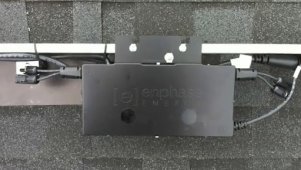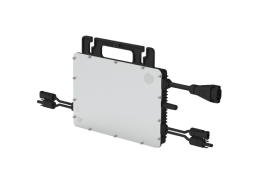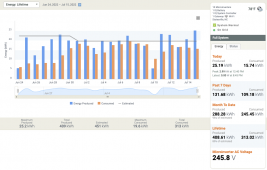You forgot to mention it is illegal to hookup those Hoymiles here in california when the Rule21 grid config is not configured.
So here in Cali you will need (at least once) to hookup a DTU.
I'm not sure that's true. I'll be taking the 30-minute training for setting up a DTU, but I've done over 300 sites in CA, and "grid-config" is product specific. Rule 21 requires certain behaviors that are already built into the inverter. It's not external software that controls them with any inverters. Enphase uploads the data to the inverter, but most inverters my crews have installed don't require an upload to meet Rule 21, and I don't think Hoymiles does either. They are CEC Approved for use in CA, and a DTU is not required.
Even if you're correct, so what? The DTU-Pro is less than half the cost of the Envoy + Comm module, and Hoymiles has a DTU-Lite that is a very low-cost USB stick as an option too. If an installer needs to carry a USB stick in his pocket to finish an install, that sounds pretty easy to me.
If you have Time-of-Use and you have storage you could during high rate times use your battery to select "zero usage" from the grid.
Eg: if your home uses 1000 watt, 1000 watts will be provided by the batteries zo make the meter show zero.
And we are talking about a whole house solution with the IQ8 & batteries.
Afaik the EG4 and aims are not grid tied as it they can deliver back to the grid. They have a load side that you can hook essential loads to that can be fed from the battery, but not the whole house.
EG4 and AIMS "can't" deliver power to the grid, they are not grid-tied. That is correct, but that does not prevent them from supplying power to the whole house. Both of them are a better option for a whole-home inverter because they can output 50A. In most small homes, 50A is the size of the largest breaker in the panel, and that's (technically) what is required for sizing a whole-home inverter per code. With an Enphase IQ system, you would need 3 x Battery 10T's + 1 x Battery 3T to get 50 Amps of inverter output for a whole-home backup PLUS it requires the Envoy, a cell modem, and the System Controller 2.
At my cost, the Enphase battery for a 50A inverter would be over $27,000 wholesale. That's 53.6 kWh of energy storage.
An equivalent EG4 battery system would be $2600 (2 inv) + $15,500 for 10 batteries (51.2 kWh) and racking, and a few other parts comes to around $18,000. With EG4 however, I could choose to have only 4 batteries, or 6. With Enphase, you have
no choice in the size of the battery relative to the inverter. It's $27,000 no matter what you do if you want to size the inverters to run a whole-home backup system at 50A. They gotcha by the tail, their whole business model is designed to rope you in and then require you to buy things that you don't need. I like choice!
IMO and I admit it openly, their Sunlight Backup System is a lure (gateway drug) that hooked me like a fish into buying everything but the battery to save cost, which then locked me into using their batteries in the future at the expensive cost I just mentioned. Smart business acumen for sure.











